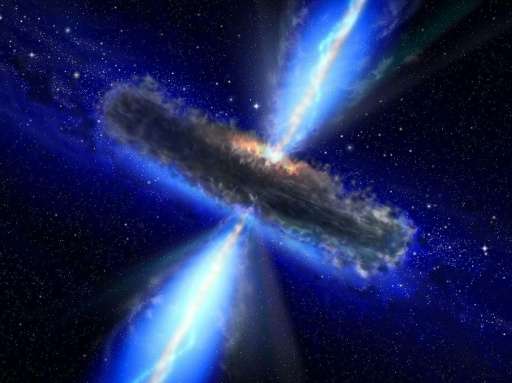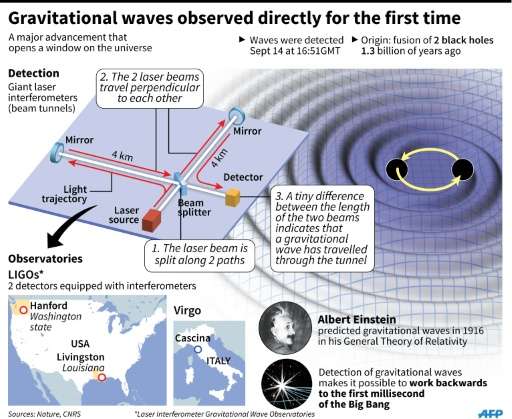Gravitational waves are direct evidence of ripples in the fabric of space-time, and their first-ever observation was announced by US scientists last week
Chinese scientists have unveiled three separate projects to investigate gravitational waves, state media said Wednesday, days after earthshaking US discoveries that confirmed Einstein's century-old predictions.
Space officials said such research would give China—which has an ambitious, military-run, multi-billion-dollar space programme that Beijing sees as symbolising the country's progress—an opportunity to become a "world leader" in the field.
Gravitational waves are direct evidence of ripples in the fabric of space-time, and their first-ever observation was announced by US scientists last week.
The Chinese Academy of Sciences (CAS) rolled out a proposal for a space-based gravitational wave detection project, the official Xinhua news agency reported.
The proposed Taiji programme, named after the "supreme ultimate" of Chinese philosophy symbolised by the yin-yang sign, would send satellites of its own into orbit or share equipment with the European Space Agency's eLISA initiative.
Separately, Sun Yat-sen University in Guangzhou also proposed to launch satellites into space, while the Institute of High Energy Physics at CAS suggested a land-based scheme in Tibet.
All three projects have yet to obtain government approval, state media said.
Grapihc explaining what gravitational waves are and how they can be detected
But Chinese physicist Hu Wenrui told the People's Daily newspaper, the official mouthpiece of the Communist party: "If we launch our own satellites, we will have a chance to be a world leader" in gravitational wave research.
Success "depends on the decision-makers' resolution and the country's investment", he added.
On a verified social media account the Chinese Academy of Science said: "If we can participate in these sorts of extremely precise technological projects then in a short time it will give a huge boost to our country's manufacturing industries."
Last week, scientists with the US-based Large Interferometer Gravitational-Wave Observatory (LIGO) said they had detected waves resulting from the collision of two black holes 1.3 billion years ago.
The executive director of the laboratory hailed the discovery as being comparable to Galileo's use of the telescope four centuries ago to open the era of modern astronomy.
© 2016 AFP
























